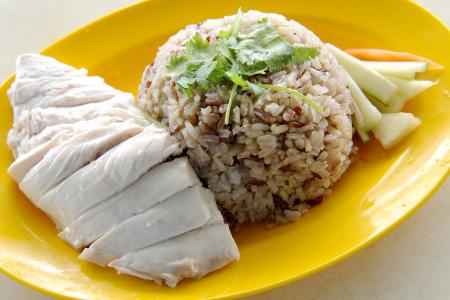Chicken-lovers of the world, beware this toxic bacteria lurking in the fowl
Love chicken?
If you said yes, then pay heed so you'll stay in the pink of health.
Before reaching for that comforting bowl of chicken porridge or chicken soup, make sure it's been cooked thoroughly.
Otherwise you could end up with something foul in your tummy.
Website Food World News says the Food Standards Agency expects a quarter million people to be affected with the chicken campylobacter bacteria this year.
Leading cause of food poisoning in Britain
Chicken campylobacter has affected 280,000 people in the UK and killed 100 people yearly - making it Britain's top cause of food poisoning.
A study found that the toxic bacteria was present in 3 out of 4 chickens sold in supermarkets.
This bacteria causes food poisoning, leading to severe diarrhea, stomach pain and vomiting.
It is especially harmful to babies and sick people with weakened immune systems.
Contamination usually happens when people eat the raw or undercooked poultry meat or consume cross-contaminated items.
There's another reason why the disease is deadly: Times Live cited University Of Pretoria researcher Antje Bartkowiak-Higgo saying the infection rate of campylobacter is expected to exceed that of salmonella.
How do you check if chicken is well cooked?

Heed these tips from How Stuff Works:
- For whole chickens: Make sure a meat thermometer inserted into the thickest part of the thigh (but not near bone or fat) should register 180 to 185 degrees Fahrenheit before removing it from the oven.
- For stuffed whole chicken: Insert the thermometer into the center of the body cavity. When the stuffing registers 160 degrees Fahrenheit, the chicken should be done. (Note: Chicken should only be stuffed just before roasting. Never stuff a chicken ahead of time.)
- For roasted whole chicken breasts, the meat thermometer should register 170 degrees Fahrenheit.
- To test bone-in chicken pieces: Insert a fork in the chicken. It should go in with ease and the juices should run clear. However, the meat and juices nearest the bones might still be a little pink even though the chicken is cooked thoroughly.
- Boneless chicken pieces are done when the centers are no longer pink: You can determine this by simply cutting into the chicken with a knife.
Sources: Food World News, Times Live, The Australian, How Stuff Works
Get The New Paper on your phone with the free TNP app. Download from the Apple App Store or Google Play Store now


